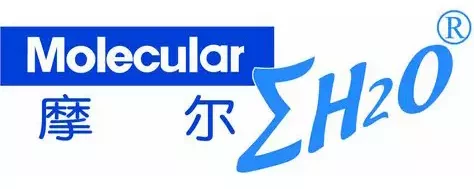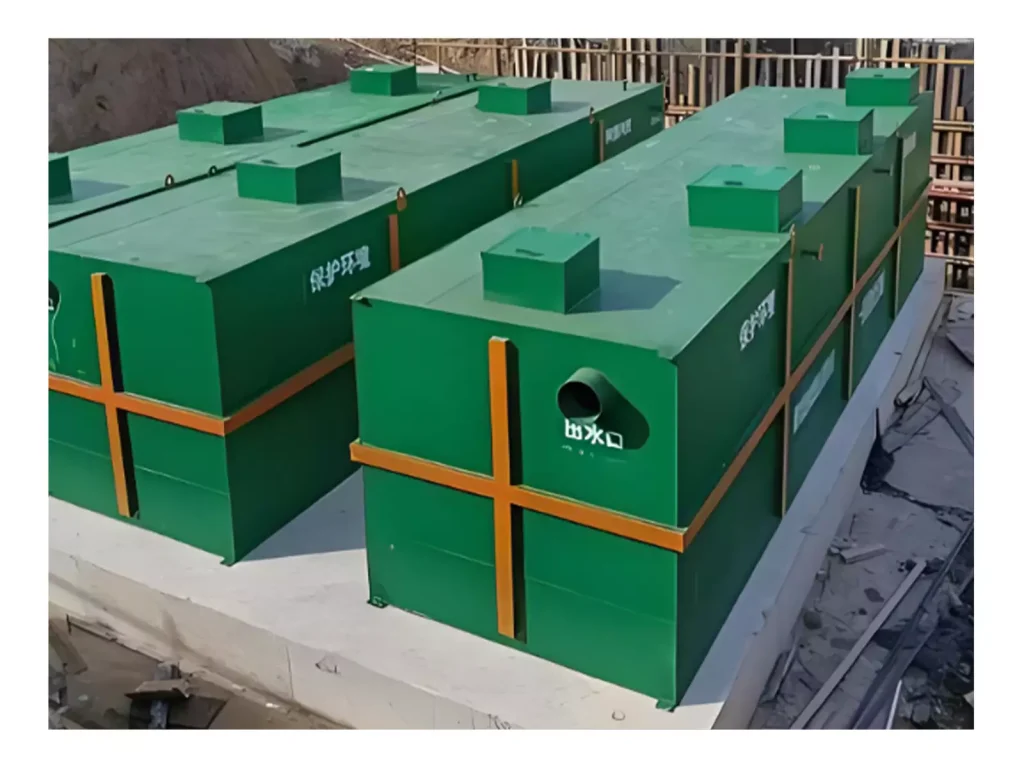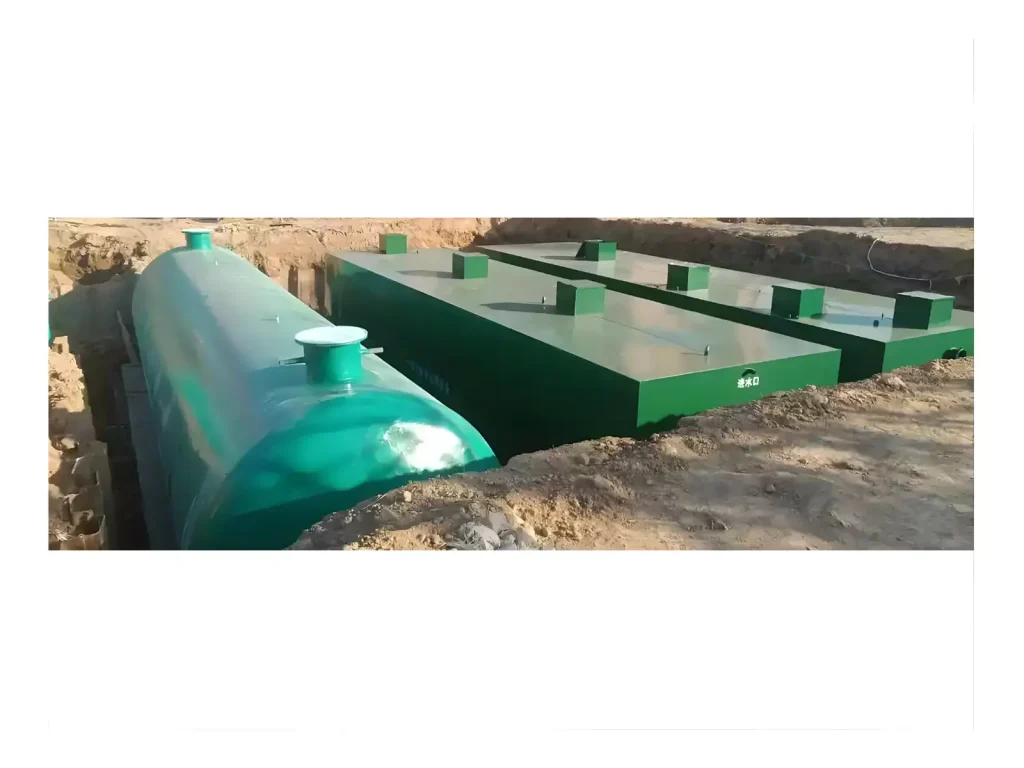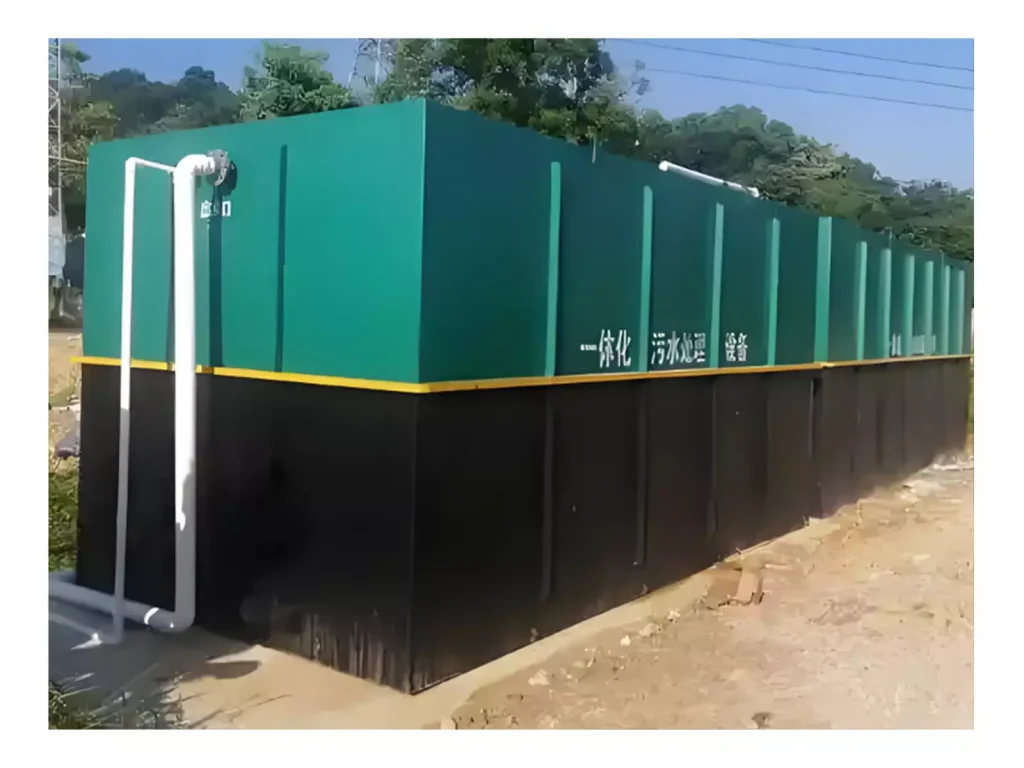Domestic Swage Treatment
Domestic sewage primarily originates from daily residential activities, including wastewater from washing, toilets, and other sources, and contains substantial amounts of organic matter and nutrients. Considering factors such as regional conditions, population density, sewage generation scale, and discharge destinations, sewage treatment can adopt centralized treatment, decentralized treatment, or a combination of both approaches. Integrated sewage treatment equipment can be utilized to provide customers with comprehensive one-stop drainage solutions.
Share to
Scope of Application
- Rural Domestic Sewage: Villages, rural tourism attractions, care facilities, etc.
- Public Facilities Sewage: Highways, railways, parks, etc.
- General Domestic Sewage: Office buildings, residential communities, shopping malls, schools, hospitals, etc.
MBBR integrated sewage treatment equipment
The MBBR (Moving Bed Biofilm Reactor) combines the advantages of the biofilm method and the activated sludge method. Its core lies in adding suspended fillers to the reactor to allow microorganisms to attach and grow.
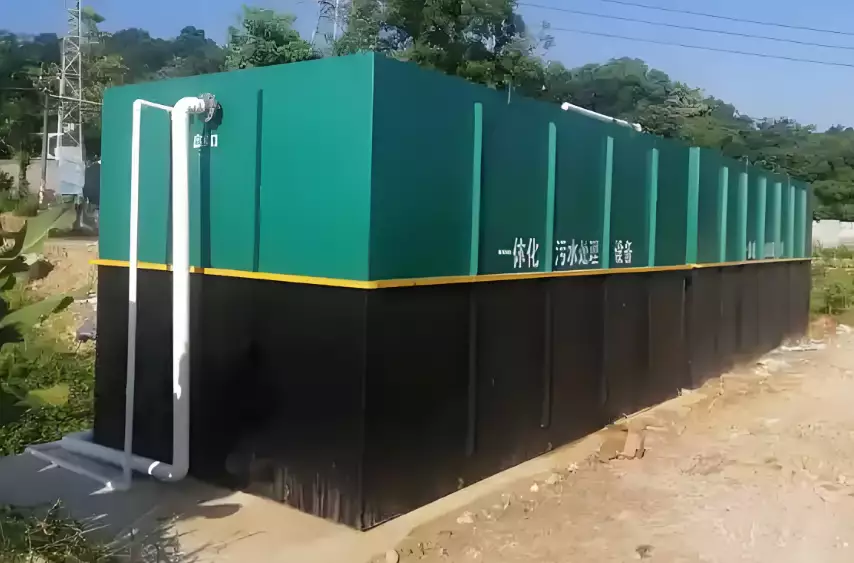
The process is:
Pre-treatment: After the sewage is collected through the pipeline network, it first enters the grid channel, where mechanical fine screens intercept large floating and suspended particles. It then flows into the regulating tank to buffer and regulate the water volume and quality, making the subsequent biochemical treatment more stable. It is then sent into the main MBBR equipment by the lift pump.
Biological treatment
Anaerobic/anoxic zone: The packing material is used for microbial attachment. Under anaerobic conditions, microorganisms decompose large-molecule organic substances. In an oxygen-deficient environment, denitrifying bacteria convert nitrate nitrogen into nitrogen gas, achieving nitrogen removal.
Aerobic zone: Through aeration, the fillers are fluidized. Aerobic microorganisms (such as bacterial flocs and nitrifying bacteria) attach to the fillers to form biofilms, which degrade organic matter and convert ammonia nitrogen into nitrate nitrogen. At the same time, the suspended fillers increase the biomass in the reactor and enhance the treatment efficiency.
Solid-liquid separation and post-treatment: After biological treatment, the wastewater enters the sedimentation zone to achieve solid-liquid separation. The sludge can be returned to the front end (such as the pre-denitrification zone) through a reflux device. The effluent is disinfected (such as ultraviolet rays) and discharged up to standard. The excess sludge is regularly discharged to the sludge tank. After dewatering, it is transported for disposal, and the filtrate is recycled to the regulating tank.
Underground non-powered sewage treatment
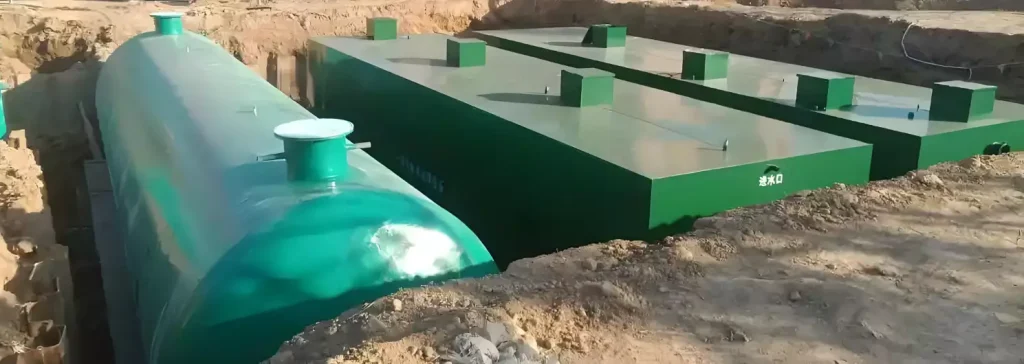
Inlet water and preliminary filtration: After the sewage is collected through the pipeline network, it first flows into the grid or screen to intercept large particles (such as leaves, plastic bags, etc.) to prevent clogging of subsequent units.
Sedimentation regulation: Enter the sedimentation tank, rely on gravity to make suspended solids settle, and at the same time adjust the water quality (such as pH value) and water volume to ensure the stability of subsequent treatment. Some will add chemicals to promote the decomposition of pollutants.
Biochemical treatment (core) : Common stages include anaerobic (hydrolysis acidification), anoxic (denitrification), aerobic (carbonization, nitrification), etc. By taking advantage of microbial metabolism, anaerobic/anoxic environments decompose large-molecule organic substances and remove nitrogen, while aerobic environments allow microorganisms (attached to fillers or activated sludge) to degrade organic substances and convert ammonia nitrogen.
Solid-liquid separation: After biochemical treatment, it enters the secondary sedimentation tank and other facilities to achieve the separation of sludge from the treated water. The sludge can be recycled (for enhanced treatment) or discharged to the sludge tank, while the clear water enters the subsequent processes.
Disinfection and discharge/reuse: The clear water is disinfected with chlorine dioxide, sodium hypochlorite or ultraviolet light to kill bacteria and then discharged after meeting the standards. It can also be further processed and reused for greening, irrigation, etc.
Micro-powered integrated sewage treatment
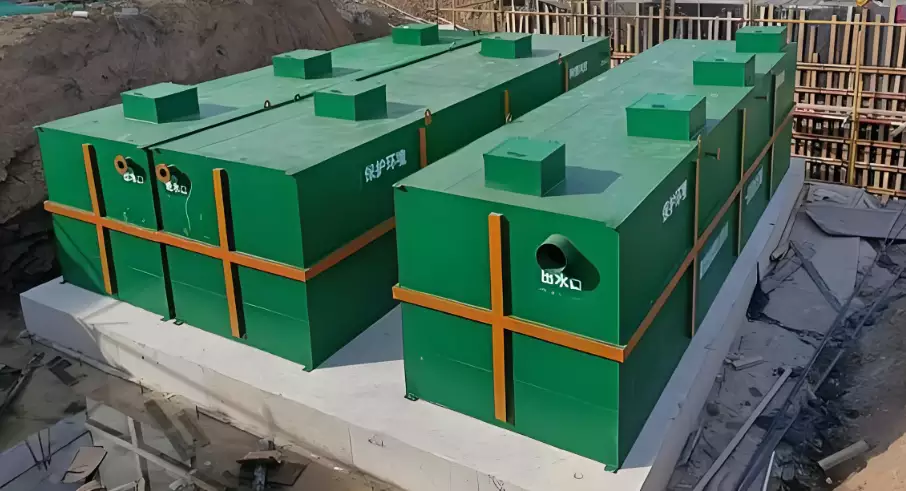
Introduction:The micro-power integrated equipment, relying on “low-energy biochemical treatment + underground integration”, simplifies the process, reduces operation and maintenance, and is specialized in small-scale decentralized sewage purification, balancing treatment effect and cost.
Application scenario adaptability: Due to the characteristics of micro-power (low energy consumption, simple aeration/stirring) and underground type (land-saving, with little impact on the surrounding environment)
used in:
Rural and township domestic sewage treatment: Centralized treatment for individual villages and individual households, solving the problems of incomplete pipe networks and insufficient professional operation and maintenance.
Small-scale and decentralized locations: such as scenic spots, expressway service areas, and remote factories, scenarios with small processing scales (tens to hundreds of tons per day) and limited power consumption and operation and maintenance.
For areas sensitive to landscape and land occupation: After being buried underground, the surface can be greened, making it suitable for places with high environmental requirements such as residential areas and parks.
Get Free Quote
Please fill in the following form, we will respond your request in 24 hours.
